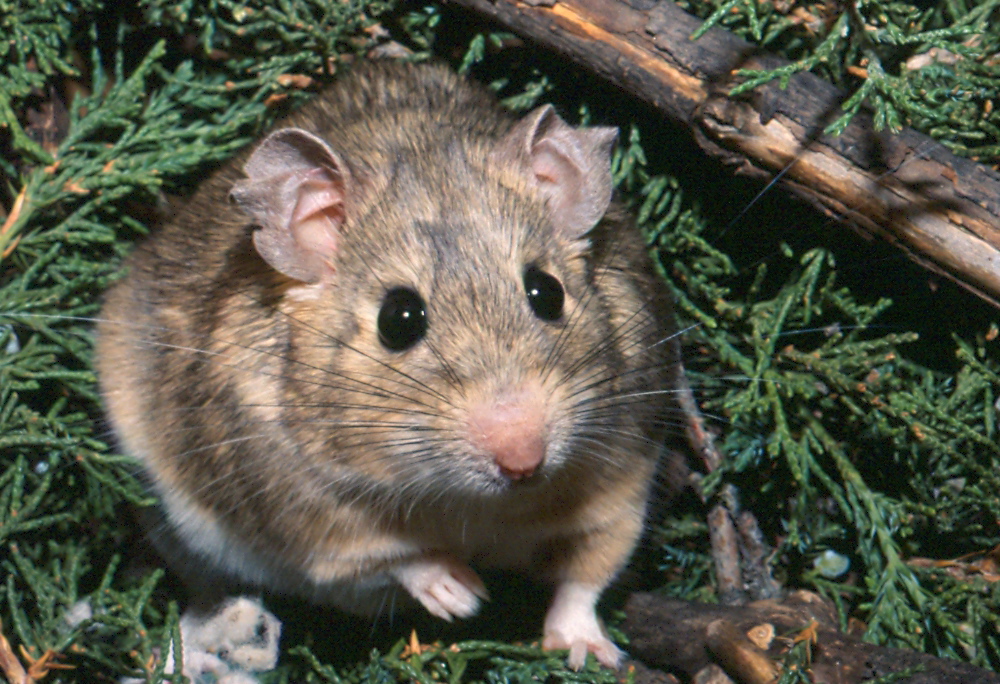Denise Dearing
Distinguished Professor of Biological Sciences
Molecular Ecology, Evolution of Detoxification, Herbivores, Plant Toxins

Molecular Biology Program
Education
B.S. Eastern Connecticut State University
Ph.D. University of Utah
Research
Thousands of species of herbivorous mammals regularly confront the possibility of being poisoned by the plant secondary compounds in their food. Little experimental work exists on the physiological mechanisms that mammalian herbivores employ to deal with plant toxins or how some species such as the koala or Stephen’s woodrat are capable of specializing on toxic plants. My research focuses on ecological factors and physiological constraints that influence foraging behavior and the evolution of diet breadth in mammalian herbivores. I have three research areas that may be of interest to students in the molecular biology program.
1) The evolution of detoxification enzymes: The first is to understand at a biochemical level, a subfamily of detoxification enzymes (Cytochrome P450 2B) that are diverse and critical in the processing of plant toxins by mammalian herbivores. This is a collaborative project with Dr. James Halpert (USCD School of Pharmacy); Jim is a biochemist who has studied the structure-function of CYP2B in humans and model species for over 30 years. Our joint project centers on conducting such research in a wild herbivore, the woodrat, and was recently funded by the NSF.
2) The role of the microbiome in toxin degradation:The second area of interest is a project to determine how gut microbes aid mammalian herbivores in the degradation of plant toxins. To date, we have found that herbivorous woodrats harbor a diversity of microbes in their foregut and that microbial diversity plays a role in an herbivore’s ability to feed on a toxic diet.
3) Temperature-dependent toxicity: The third examines whether the voluntary ingestion of toxins by mammalian herbivores is a function of ambient temperature. Pharmacological studies on clinical rodents have repeatedly found that the lethal dose of a pharmaceutical is a function of ambient temperature; animals tolerate far less of a compound at warm or extremely cold temperatures. Our results on wild herbivores suggest that this is a general pattern and the results have implications for predicting the responses of herbivorous mammals to a warming climate.
We use a range of molecular techniques in these studies such as enzyme assays, heterologous expression of proteins, metabolomics, microarrays (we have developed custom arrays for our species) and high throughput sequencing.

References
- Kohl KD, Weiss RB, Cox J, Dale C, Dearing MD. (2014) Gut microbes of mammalian herbivores facilitate intake of plant toxins. Ecology Letters. 17(10):1238-46
- Kohl KD, Skopec MM, Dearing MD. (2014) Captivity results in disparate loss of gut microbial diversity in closely related hosts. Conserv Physiol. 2(1):cou009
- Miller AW, Kohl KD, Dearing MD. (2014) The gastrointestinal tract of the white-throated woodrat (Neotoma albigula) harbors distinct consortia of oxalate-degrading bacteria. Appl Environ Microbiol. 80(5):1595-601
- Varner J, Dearing MD. (2014) Dietary plasticity in pikas as a strategy for atypical resource landscapes. Journal of Mammalogy, 95(1):000-000
- Wilderman PR, Jang H, Malenke JR, Salib M, Angermeier E, Lamime S, Dearing MD, Halpert JR. (2014) Functional characterization of cytochromes P450 2B from the desert woodrat Neotoma lepida. Toxicology and Applied Pharmacology. 274(3):393-401
- Miller AW, Dearing MD. (2014) The metabolic and ecological interactions that maintain the balance of oxalate in mammals. Pathogens. 2:636-652
- Samuni-Blank M, Izhaki I, Gerchman Y, Dearing MD. (2014) Taste aversion from fleshy fruits containing glucosinolates: Seed predator versus seed disperser. In Review.
- Dearing MD, Clay C, Lehmer E, Dizney L. (2014) The influence of community complexity on host interactions and pathogen prevalence. Journal of Mammalogy. In Review.
- Kohl KD, Dearing MD. (2013) Wild caught rodents retain a majority of their natural gut microbiota upon entrance into captivity. Environmental Microbiology Reports. 6(2):191-5
- Varner J, Dearing MD. Facultative dietary specialization in pikas as a strategy for novel resource landscapes. Journal of Mammology. DOI:10.1644/13-MAMM-A-099.1
- Skopec MM, Malenke J, Halpert JR, Dearing MD. (2013) An in vivo assay for elucidating the importance of cytochromes P450 for the ability of a wild mammalian herbivore (Neotoma lepida) to consume toxic plants. Physiological and Biochemical Zoology. 5:593-601
- Kurnath P, Dearing MD. (2013) Warmer ambient temperatures depress liver function in a mammalian herbivore. Biology Letters. DOI: 10.1098/rsbl.2013.0562
- Skopec MM, Hale AJ, Torregross A-M, Dearing MD. (2013) Biotransformational enzyme expression in the nasal epithelium of woodrats. Comparative Biochemisty and Physiology Part C. 157:72-79
